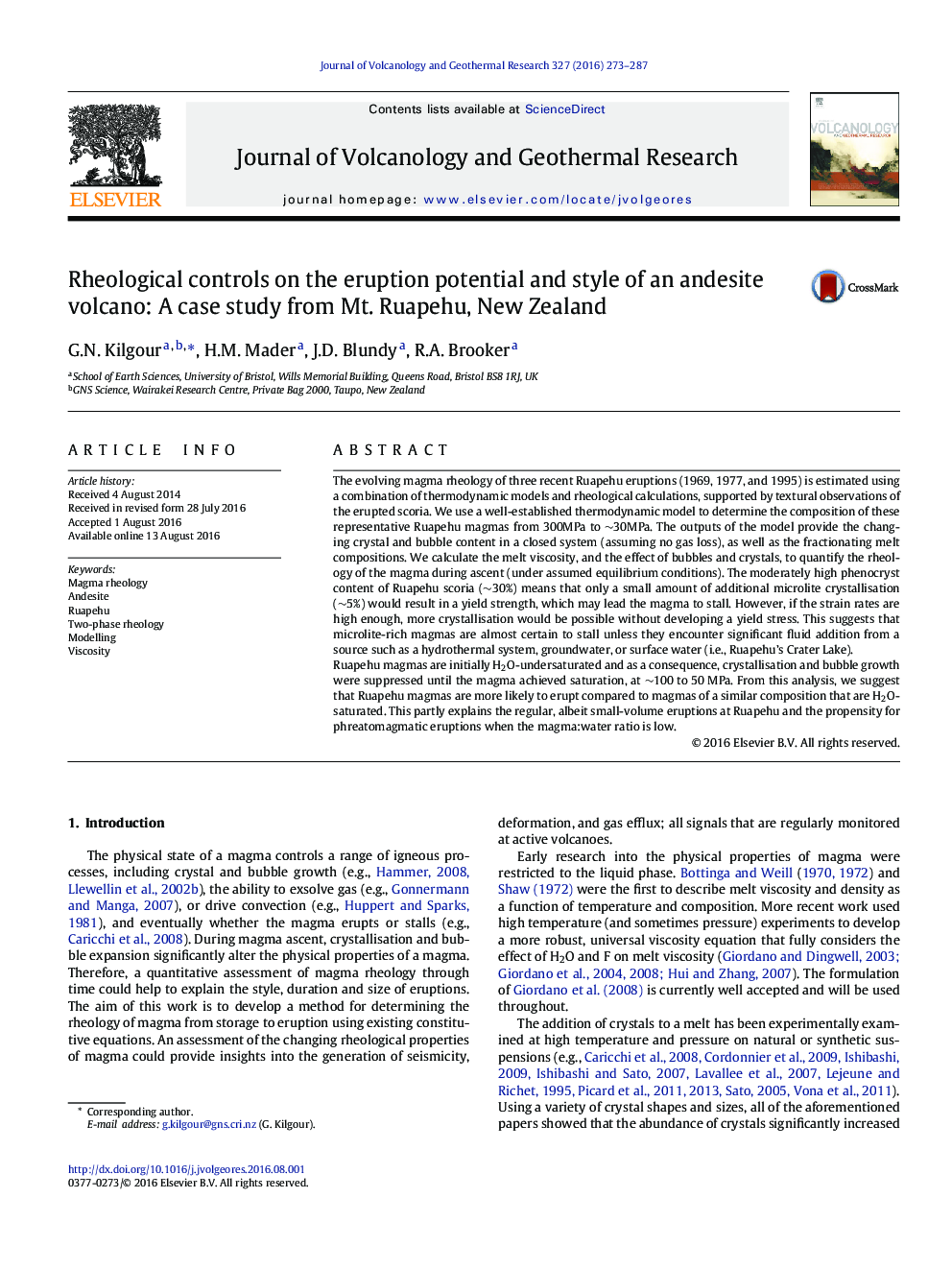| کد مقاله | کد نشریه | سال انتشار | مقاله انگلیسی | نسخه تمام متن |
|---|---|---|---|---|
| 5783774 | 1638295 | 2016 | 15 صفحه PDF | دانلود رایگان |

- Using constitutive equations, the evolving rheology of a magma is modelled from storage to eruption.
- We use a natural andesite magma from Mt. Ruapehu, New Zealand to show that magmas rise to shallow depth before gas exsolution.
- A comparison between modelled magmas and natural samples reveals good agreement.
- This work partly explains the frequent, albeit small-volume eruptions at Ruapehu over more than 50Â years.
The evolving magma rheology of three recent Ruapehu eruptions (1969, 1977, and 1995) is estimated using a combination of thermodynamic models and rheological calculations, supported by textural observations of the erupted scoria. We use a well-established thermodynamic model to determine the composition of these representative Ruapehu magmas from 300MPa to â¼30MPa. The outputs of the model provide the changing crystal and bubble content in a closed system (assuming no gas loss), as well as the fractionating melt compositions. We calculate the melt viscosity, and the effect of bubbles and crystals, to quantify the rheology of the magma during ascent (under assumed equilibrium conditions). The moderately high phenocryst content of Ruapehu scoria (â¼30%) means that only a small amount of additional microlite crystallisation (â¼5%) would result in a yield strength, which may lead the magma to stall. However, if the strain rates are high enough, more crystallisation would be possible without developing a yield stress. This suggests that microlite-rich magmas are almost certain to stall unless they encounter significant fluid addition from a source such as a hydrothermal system, groundwater, or surface water (i.e., Ruapehu's Crater Lake).Ruapehu magmas are initially H2O-undersaturated and as a consequence, crystallisation and bubble growth were suppressed until the magma achieved saturation, at â¼100 to 50Â MPa. From this analysis, we suggest that Ruapehu magmas are more likely to erupt compared to magmas of a similar composition that are H2O-saturated. This partly explains the regular, albeit small-volume eruptions at Ruapehu and the propensity for phreatomagmatic eruptions when the magma:water ratio is low.
Journal: Journal of Volcanology and Geothermal Research - Volume 327, 15 November 2016, Pages 273-287